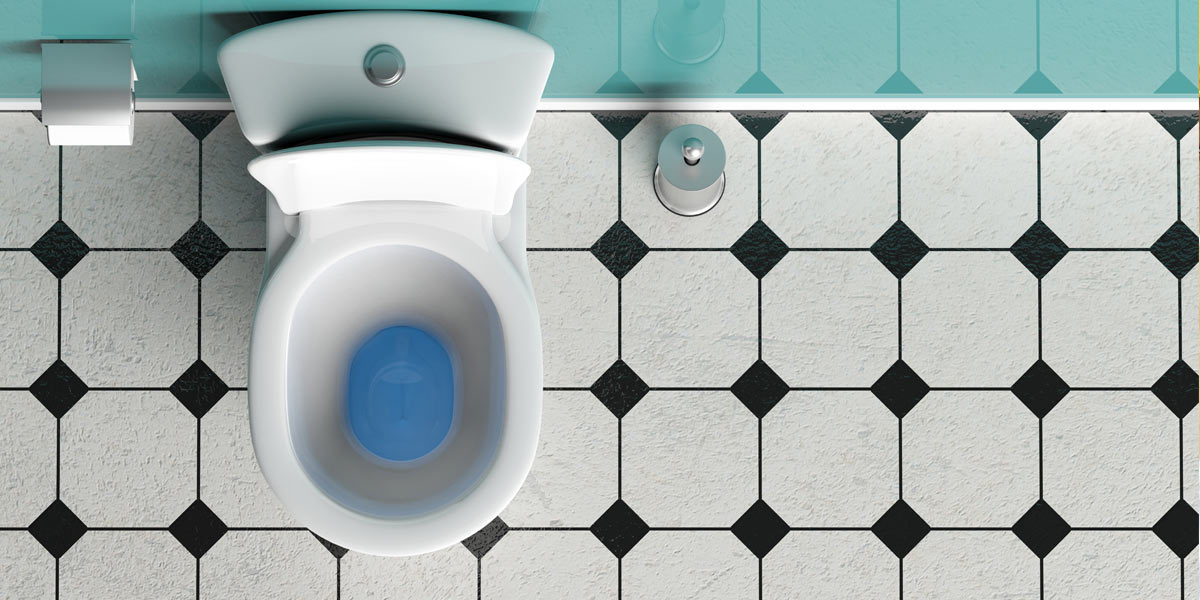- Choosing the right toilet plunger
- Preparing to plunge a toilet
- How to unclog a toilet with a plunger
- How to unclog a toilet with dish soap
- What to do when plunging doesn’t work
Most households already have a toilet plunger, but often only one or two family members actually know how to use it to unclog a toilet. Sometimes, when a spouse or parent is away and the toilet clogs, the other family members find themselves needing to learn quickly!
Our how-to guide will walk you through this valuable life skill, with all the info you need to successfully plunge a toilet.
Choosing the right toilet plunger
Plungers works by using the alternating powers of compression and suction to dislodge anything stuck in your toilet pipe. Therefore, the better the seal between plunger and pipe, the more effective the plunge!
If you’re buying a plunger or you have a choice between a few, make sure you choose one with a flange or accordion. An accordion plunger has an accordion-like section that allows you more up-and-down plunging room to increase pressure. A flange plunger has a soft rubber cup that sticks out at the bottom. Both types are designed to create a tight seal on the toilet drain hole to allow proper suction.

You last choice would be a sink or standard plunger, which has one simple half-basketball cup. In a pinch, it’s better than nothing, but it’s really meant to work on flat surfaces (like a sink drain) and isn’t your best option for a toilet.
A toilet plunger generally costs between $10 and $30.
Preparing to plunge a toilet
Before you plunge:
- Save yourself some clean-up work by putting on rubber gloves and wrapping a rag or and old towel around the base of the toilet bowl.
- Make sure you have the right amount of water in the toilet. To help with suction, the inner cup of your plunger should be completely submerged. If the water level is too low, add some water to the bowl (not hot, or you risk cracking the porcelain). On the other hand, if there’s too much water in the bowl, it can cause excessive splashing. If this is the case, use a bucket to bail out some water.
- Locate the arm of the fill valve, which connects to the flapper in your toilet tank to prevent an overflow. Remove the cover on top of the tank and look for a round, (usually black) plastic stopper. This is the flapper, which controls the flow of water from the toilet tank into the bowl. If at any point the toilet bowl starts filling with too much water, be ready to lift the arm to stop it from overflowing.
- Note: If you don’t see a fill valve with an arm, you’ll have to use the shut-off valve behind the toilet to turn the water off.
- Be safe: Never pour chemicals into the toilet before your plunge! These chemicals could spray up onto your skin while you plunge.
How to unclog a toilet with a plunger
- Put the plunger into the toilet bowl with the inner cup aimed directly over drain hole (if it’s the accordion kind, make sure it’s fully extended). Since drain holes are usually at the very bottom of the bowl, the handle should be vertically straight, not at an angle. Try to get the best seal you can.
- Plunge down gently the first time, to release air trapped inside the plunger. If you push hard the first time, you may get splashed.
- Plunge up and down vigorously, trying not to break the suction seal, six to ten times. Repeat this a few times, until the water in the toilet bowl goes down.
- If and when you think you’ve dislodged the clog, try flushing the toilet. Be ready to pull up the flapper to prevent an overflow if the toilet is still clogged.
Don’t have a plunger? Try dish soap
If you don’t have a plunger, another method you can try is pouring some liquid dish soap into your toilet bowl. Dish soap is heavier than water, so in time it can sink down and lubricate the clog.
This method doesn’t work every time, but it can work for some clogs and it’s certainly worth trying!
How to unclog a toilet with dish soap
- Pour one quarter cup of liquid dish soap into the bowl of a clogged toilet.
- Allow 20-30 minutes for the dish soap to work its way down to the clog. During this time, you should notice the water level drop a bit if the soap is working. If you have a plunger, try plunging the dish soap further down.
- If the water level has dropped, pour some more water into the bowl and see if it also goes down. If the water level goes down again, take it as a good sign and try flushing the toilet.
- Still clogged? It won’t hurt to add a little more dish soap to the bowl and see if anything happens over a longer time period.
What to do when plunging and dish soap don’t work
If your toilet is still clogged after plunging, the blockage may be too solidly lodged or located too far down.
If you have a toilet auger, that’s your next tool to try (step-by-step guide soon to follow!). Otherwise, it’s time to call a plumber.
If you live in East Toronto and have a clogged toilet that won’t plunge, contact Neighbourhood Plumbing today and we’ll get things flowing!
